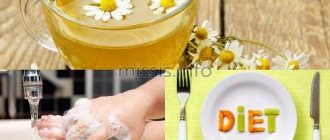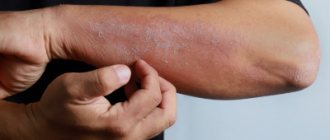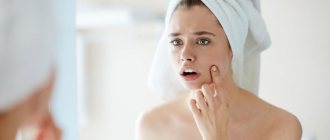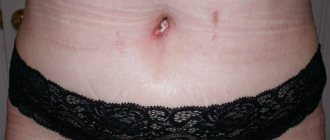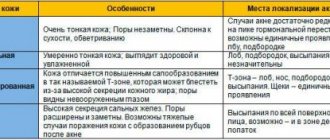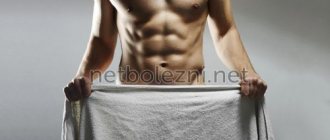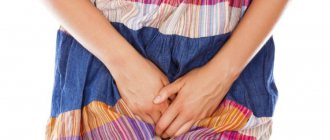Subcutaneous acne causes discomfort, often causes pain, spoils the appearance, and affects self-esteem. They can occur occasionally locally or bother you regularly, occupying large visible areas of facial skin. The fight against “subcutaneous lesions” takes quite a long time and requires systematic action - at home and in the cosmetologist’s office.
Types of subcutaneous acne
Subcutaneous pimples (or “subcutaneous pimples”) look like lumps inside the skin that are inflammatory in nature. They come in different types :
- Closed comedones are most often located in the T-zone - on the forehead, nose and chin. In addition to inflammation, such acne is often accompanied by a greasy sheen, enlarged pores, and dull complexion, characteristic of oily skin type.
- papules are non-cavitary dense formations of pink or red color on the face that arise due to inflammation of the ducts of the sebaceous glands and hair follicles (when a sebaceous plug forms inside).
- pustules are cavity-like wen-like pimples with a white head, 2-5 mm in diameter , inflamed pimples around which there is redness.
- milia - (whitish cysts of the sebaceous glands, which have a dense structure, so difficult to squeeze out only after piercing the skin).
- Sebaceous gland adenomas often appear in the area around the eyelids and on the cheeks. Characteristic for people with oily and combination skin types. They look like pinkish or yellowish papules or nodules and are a benign formation of the ductal epithelium of the sebaceous glands.
How to treat subcutaneous acne
Systematically and profusely appearing subcutaneous acne requires treatment both externally and internally . Otherwise, inflammation can spread over a large area (become chronic and severe - inverse acne), and there is also a risk of atrophic or splintered scars.
In the case of systematic acne formation, it is recommended to contact a dermatologist or cosmetologist , who will study your medical history and prescribe a course of procedures or medications, as well as select a diet plan to combat acne.
Cosmetic products to combat acne usually contain acids, zinc, retinol, antibiotics or components that draw out inflammation . But you should not self-medicate, because at best it may turn out to be ineffective, and at worst it will increase inflammation, lead to burns or post-acne (changes in pigmentation, scars). The cosmetologist will select those cosmetics that are suitable for the patient’s specific skin type.
Getting rid of redness and swelling
How to remove a squeezed pimple, that is, redness and swelling left after the main procedure, without pain? This is quite an interesting question. In fact, there are several options for treating the problem area. You can get rid of redness using such remedies as:
- Mask with cinnamon and honey. In cases where a pimple has been squeezed out, swelling has appeared and severe pain is felt, you can prepare a working mask. For it you need to mix a teaspoon of honey and exactly the same amount of cinnamon. This mass must be regularly applied to the inflamed area for 10-15 sessions, once a day. If the patient is allergic to honey, it can easily be replaced with clay.
- Exfoliation. This procedure can remove dead skin cells as effectively as possible. As a rule, various scrubs or cleansing lotions are used for this.
This way you can fight redness, but if a tumor appears, treating the problem area with such means as:
- Cold vodka.
- Chamomile decoction.
- Iodine.
- Aloe juice.
- Salicylic acid.
- Boric Vaseline.
Any of these remedies can be used to treat the inflamed area using cotton wool regularly 3 times a day.
Causes of subcutaneous acne
Subcutaneous swelling occurs due to internal causes and external factors.
Internal causes of acne:
- hormonal imbalance (due to age-related changes and disturbances in the functioning of internal organs);
- disruption of internal organs and autoimmune diseases;
- negative heredity (tendency to oily skin);
- bad habits;
- poor nutrition (lack of nutrients, vitamins, antioxidants) and insufficient fluid intake;
- sleep disturbance and stress;
- physical inactivity.
External factors influencing the appearance of acne:
- bad ecology;
- insufficient hygiene;
- unsuitable cosmetics;
- rhythm of life, which involves frequent flights and food on the run;
- habit of frequently touching your face and squeezing pimples;
- attempts at self-medication.
Expert advice
If acne occurs regularly on the body, then this is an excellent reason to contact a dermatologist. A professional will help determine the exact cause of the appearance, and then tell you what to do about this problem and how to get rid of a squeezed pimple.
Treatment prescribed by a doctor may sometimes include the use of antibiotics. Using the recommendations of experts, anyone can get rid of the problem of acne. The most important thing is not to self-medicate, otherwise the condition will worsen and you will not be able to do without surgical intervention in the future.
Treatment of subcutaneous acne at home
will help you get rid of acne at home :
Ichthyol ointment anesthetizes, relieves inflammation, and draws out internal inflammation. It is necessary to apply the ointment to the pimple before going to bed and cover it with a band-aid. The disadvantages of this method are an unpleasant odor and a bright, dark, tar color.
Levomekol is an antibiotic-based ointment that treats acne and heals wounds and does not have an unpleasant odor. It is also recommended to apply it under a patch at night.
Oil-based chlorophyllipt
Natural tea tree oil is an excellent anti-inflammatory and disinfectant. Can be applied to inflammation with a cotton swab throughout the day.
Masks based on blue clay relieve inflammation, even out complexion, cleanse pores, remove toxins, soothe, increase skin tone, and stimulate cellular metabolism.
Calendula solution is an anti-inflammatory and antimicrobial agent, but you should take precautions when using it, since the tincture contains alcohol, which dries out the skin greatly.
At home, it is necessary to take medications prescribed by a dermatologist (these can be antibiotics, hormonal pills, and intestinal cleansers) and follow all recommendations to achieve optimal results.
On the back
Back discomfort significantly impairs the quality of life, but there is a way out. In this case, there are also several ways that will quickly relieve discomfort:
- Tar soap helps a lot, but if you have acne on your back, you should not just apply it, but use it while taking a shower;
- A solution of potassium permanganate or salicylic acid, which can be found in any pharmacy, can be used to treat pimples until they are completely eliminated.
Treatment methods for subcutaneous acne in cosmetology
Phototherapy for acne using the M22 device from Lumenis removes toxins from the skin and relieves inflammation .
Broadband pulsed light activates porphyrin (a pigment produced by bacteria that appears under the skin when the sebum in the hair follicle becomes inflamed). When photoexcited, porphyrin generates singlet oxygen, which releases anti-inflammatory mediators. They have a destructive effect on bacteria and reduce the intensity of the sebaceous glands. At the same time, light rays act on the capillaries that feed the sebaceous glands, narrowing them. Thus, without the necessary nutrition, sebum production is reduced, which means the number of acne-causing bacteria is reduced and recurrent breakouts are prevented.
Make an appointment
Simultaneously with acne therapy, procedures using the M22 device help solve other problems:
- removal of age spots, scars and post-acne;
- stimulation of metabolic processes in epidermal cells;
- increasing skin tone;
- detoxification and formation of local immunity.
After 3-5 procedures, the effect becomes noticeable , and an ideal result is possible after 7-10 procedures, depending on the initial condition of the skin, and it lasts up to six months. Acne treatment with the M22 device is indicated for people of different ages , with various cosmetological problems, and replaces a complex of various cosmetological manipulations.
Treatment of subcutaneous acne with the Hydrafacial device
The Hydrafacial device, produced by the Californian company EdgeSystems, has a complex effect on the skin: treatment of acne, smoothing of facial contours, removal of age spots, rejuvenation, removal of dead cells, normalization of metabolic processes . All procedures are performed using individual nozzles designed in such a way that medicinal compounds are simultaneously supplied under pressure through them, and imperfections, dead cells and waste serums are removed using vacuum. This technology is called Vortex Fusion.
Cosmetologists at the Cosmetology Unit clinic select ideal serums and types of attachments that suit the patient, taking into account his problems and requests. To treat subcutaneous acne, it is recommended to take a course of 8-10 procedures of 60 minutes each, however, after the first session the effect will be noticeable.
Acne treatment is carried out in 6 stages:
- make-up removal and cleansing with Activ Cleanser;
- microdermabrasion using a special nozzle with an abrasive coating in the form of diamond coating;
- exfoliation (removal of dead cells using Activ-4 serum);
- acid peeling with GlySal serum containing a combination of glycolic and salicylic acids (in different proportions, depending on the patient’s skin type);
- extraction using Beta-HD serum (skin cleansing, removal of comedones);
- hydration and protection (a moisturizing and nourishing composition is applied, as well as sunscreen).
Hydrafacial treatment is safe and painless , suitable for absolutely everyone, and does not require special preparation or rehabilitation period.
Extrusion procedure
As mentioned above, in order not to worsen the condition, you need to read the instructions and advice from professionals. First of all, before squeezing out a pimple on your face, you should carry out a hygiene procedure. This involves checking the area under your nails for dirt, followed by washing your hands thoroughly with soap.
To protect the body from the penetration of germs into an open wound, you need to cleanse the skin of sweat, dirt, and makeup. An antibacterial agent in combination with a gel or lotion will be an excellent assistant for this.
The next step is exfoliation. It is necessary to remove dead cells using salicylic acid. It is enough to gently spread it on the pimple itself and rub it for a couple of minutes. It should be remembered that you need to use gloves when doing this.
After clearly identifying the central place, you need to grab it with your fingertips from all sides and stretch it in different directions, and not squeeze it inward, as many people do. If you stretch the pimple in different directions, the abscess itself (a white formation on the surface) will separate from the skin. Then you need to massage the area around it until all the pus comes out. It is forbidden to touch the pimple itself, as this may lead to adverse consequences. The main indicator that the procedure was successful is the appearance of clear liquid.
The wound that appears after squeezing can be treated with any antiseptic, and for cauterization it is best to use calendula tincture.
Prevention of subcutaneous acne
- daily cleansing with delicate compositions without alcohol and oil, with optimal PH;
- removal of negative factors (fighting stress, eliminating allergens);
- giving up bad habits, switching to proper nutrition, maintaining a drinking regime and healthy 8-hour sleep;
- drug treatment of diseases of internal organs and generally careful attitude towards one’s health;
- using cosmetics that suit your skin type;
- regular visits to a cosmetologist.

